There are generally two types of starting devices for small cars. One is the starting device that starts the car by turning the ignition switch key, also known as "key start." There is also a starter device that starts the car by clicking a button, also known as "keyless start" or "one-key start".
(one) key start
Generally, the ignition switch that is started by the key is provided with four different gears.
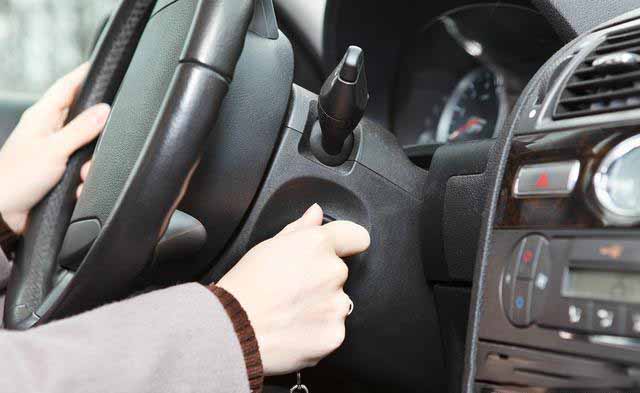
is arranged as follows:
① LOCK— is the position to insert and remove the ignition switch key.
② ACC— is the first gear that rotates clockwise after inserting the key, and the engine is not started (fired off)。 At this time, only car audio equipment can be used.
③ ON— is the second gear that rotates clockwise after inserting the key. It is the position where the engine is located after starting. It can display data, wipers, power windows, power mirrors, air conditioners, turn signals and other electrical equipment. When the engine has not been started or has been turned off, setting this position can still use electrical equipment such as speakers, wipers, power windows, and power rearview mirrors.
④ START— is the third gear that rotates clockwise after inserting the key. It is the position to start the engine. This position is the "spring force switch". When the engine is started and the ignition switch key is released, the ignition switch will automatically bounce back to the ON position.
Attention! Once the engine starts, immediately release the ignition switch key, and do not let the starter run with the engine to prevent damage to the starter.
When removing the key, you must set the shift lever to the P parking position to remove the key. In addition, when you turn the key to the ACC flameout position, the key cannot be removed. You need to push the key into the lock cylinder and Rotate one more counterclockwise until the LOXK inserts and pulls out the position to remove the key.
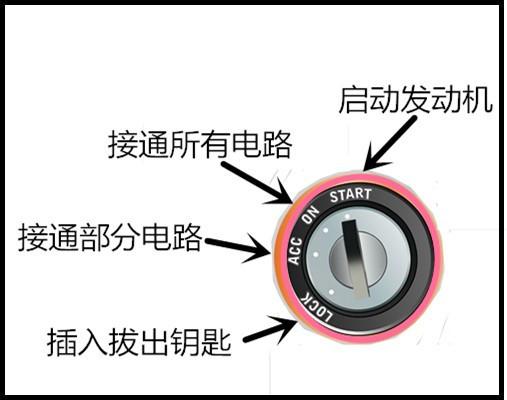
# Schematic diagram of key start switch
(two) keyless start (one key start)
Keyless start is the starting device to start the car by pressing the button, also known as "one-key start".
Its operation method is as follows:
① Click the start button without stepping on the brake, which is equivalent to the ACC activated by the key (that is, the first gear rotated after inserting the key)。 At this time, only car audio and radio can be used.
② Click the start button again without stepping on the brake, which is equivalent to NO for key start (that is, the second gear that rotates after inserting the key)。 At this time, all electrical equipment such as instrument display, wipers, power windows, power rearview mirrors, air conditioners, turn signals, etc. can be used for the instrument detection stage. When the engine has not been started or has been turned off, setting this position can still use electrical equipment such as speakers, wipers, power windows, and power rearview mirrors.
③Press the start button while stepping on the brake pedal, which is equivalent to the "start gear" START of the key start (that is, the third gear rotated after inserting the key)。 At this time, the engine is started. Note: The engine can be started with one click, do not press the start button for a long time.
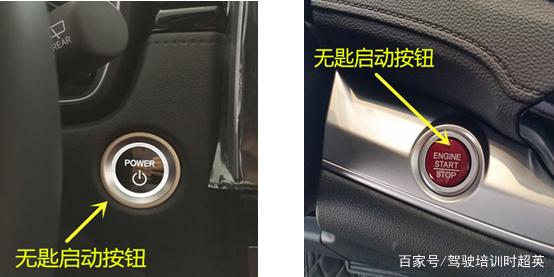
For a normal running engine, the engine will stop immediately after turning off the ignition key. Regardless of whether it is parking or driving. However, the engine can continue to run after the car is turned off. Since the flameout method of diesel engines is too complicated, and there are relatively few diesel family cars, we will only discuss gasoline cars.
Will the engine stall if I turn off the ignition switch during normal driving?
Gasoline engine flameout principle
When the gasoline engine is working, it is a mixture of gasoline and air that is sucked into the cylinder. The spark plug ignites the mixture to generate power to maintain operation.
Early carburetor engines were fueled by the carburetor. When the intake air flow passed through the carburetor, part of the gasoline was sucked into the cylinder together. The ignition system is a mechanical ignition coil, and the ignition switch controls the power supply of the ignition coil. As long as the ignition switch is turned off, the spark plug cannot ignite and the engine stops running. At this time, even if there is still mixed gas entering the cylinder, the combustion cannot continue because the power supply of the ignition system is cut off.

Today's gasoline engines are controlled by the ECU to control fuel supply and ignition. The ECU judges the timing of fuel injection and ignition based on the sensor signal, and then controls the fuel injection nozzle to control the ignition of the spark plug, and the engine runs. At this time, if the ignition switch is turned off, the power supply of the ECU, the injector, and the ignition coil will be cut off. These devices will stop working instantly. If the injector does not inject fuel and the spark plug does not ignite, the engine will not run.
That is to say, the gasoline engine will turn off immediately as long as the ignition switch is turned off. But the flameout mentioned here does not mean that the engine stops, but that the engine does not output power by itself.
Why does the engine turn after it stops?



We have been arguing about this question: whether the engine sprays or not when coasting with gears during driving. The reality is that under certain circumstances, the dfsk geared coasting engine does not inject fuel, but some people can't believe it, because in their opinion, the engine will not do external work without fuel injection, and it will not be able to rotate without doing work. The engine tachometer and speedometer are displayed normally when coasting with gear, so they never think that the engine can stop fuel injection when coasting with gear.
In order to explain this issue clearly, we will continue to discuss it.
Why does the car run?
We all know that a car is driven by an engine. The engine is connected to the gearbox, and the gearbox is connected to the transmission shaft. In this way, the power of the engine is transmitted to the driving wheels one by one, and the car starts running.
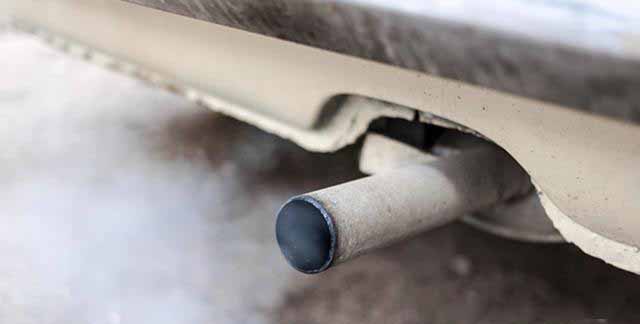
The problem is here: the engine can drive the wheels to turn, indicating that there is a hard connection between the engine and the wheels. So why can't the wheels turn to drive the engine to turn? The answer is absolutely yes. This problem is easy to understand. Just like an electric fan, when the electric fan is running, the motor drives the fan blade to rotate. After turning off the power, the motor must rotate with the fan blade.
The reason why there is no fuel injection when sliding with gear
The fundamental reason why the engine can stop fuel injection when coasting with gear is that the driving wheels are dragging the engine back through the transmission system at this time. When we step on the accelerator, the power of the engine is transmitted to the driving wheels through the gearbox and transmission system, allowing the car to run forward. When we release the accelerator, the engine stops fuel injection, the car continues to slide forward by inertia, and the driving wheels can reversely drag the engine through the transmission system and the gearbox.
So what happens when the ignition is turned off while driving? This can be divided into two situations:
1. When coasting in neutral gear or sliding on the clutch
At this time, turn off the ignition switch and the engine will quickly turn off and stop. Because the engine is not doing work at this time, and there is no external force to drive it, so it stops.
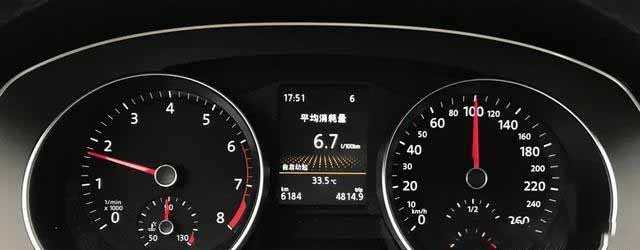
2, glide with gear
Turn off the ignition at this time and you will not notice any abnormality. Because the engine has stopped fueling before you turn off the ignition switch, the reason why the tachometer still shows that is because the driving wheels are dragging the engine back. After you turn off the ignition switch, the engine is still being driven backwards by the driving wheels. So you can't notice any change.
In fact, there is another interesting phenomenon, that is, when you turn off the ignition switch and then turn on the ignition switch when coasting with gear, you will not feel any abnormality during the whole process. Because when you turn on the ignition switch again, the engine still doesn't inject fuel, and it is still being driven by the driving wheel.


It should be noted that the situation mentioned above refers specifically to the state where the engine does not inject fuel, and not all coasting engines with gear do not inject fuel. Whether the engine injects fuel during coasting with gear depends on the current speed. Generally speaking, when the engine speed is higher than a certain speed during coasting with gear, the engine will stop fuel injection. This speed is called "reverse injection speed". And this stop of fuel injection is not a sudden stop, but gradually decreases until it stops completely, mainly to ensure smoothness, after all, a sudden stop of fuel injection will cause a sudden increase in engine braking force, which will cause a frustration. When the speed drops to the reverse injection speed, the engine will resume fuel injection.
READ MORE:
dfsk vans
catalytic converter
car battery
wheel bearing
truck accessories











